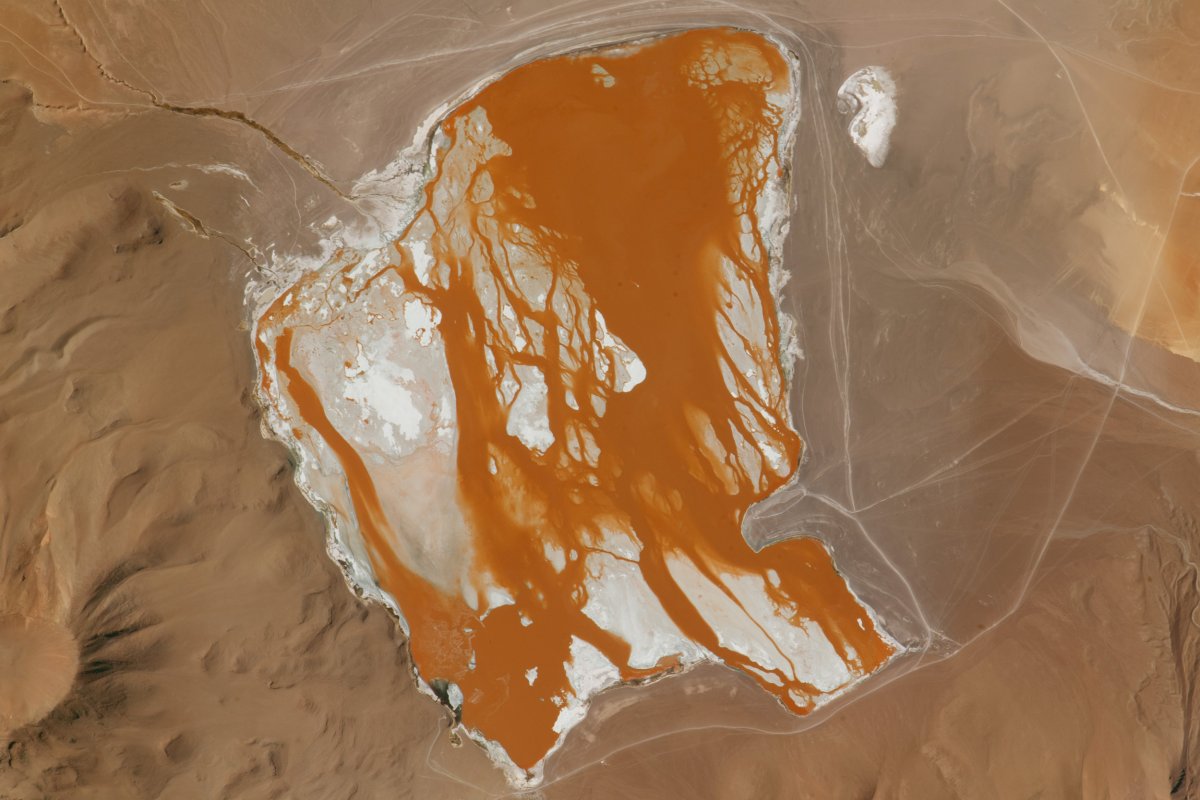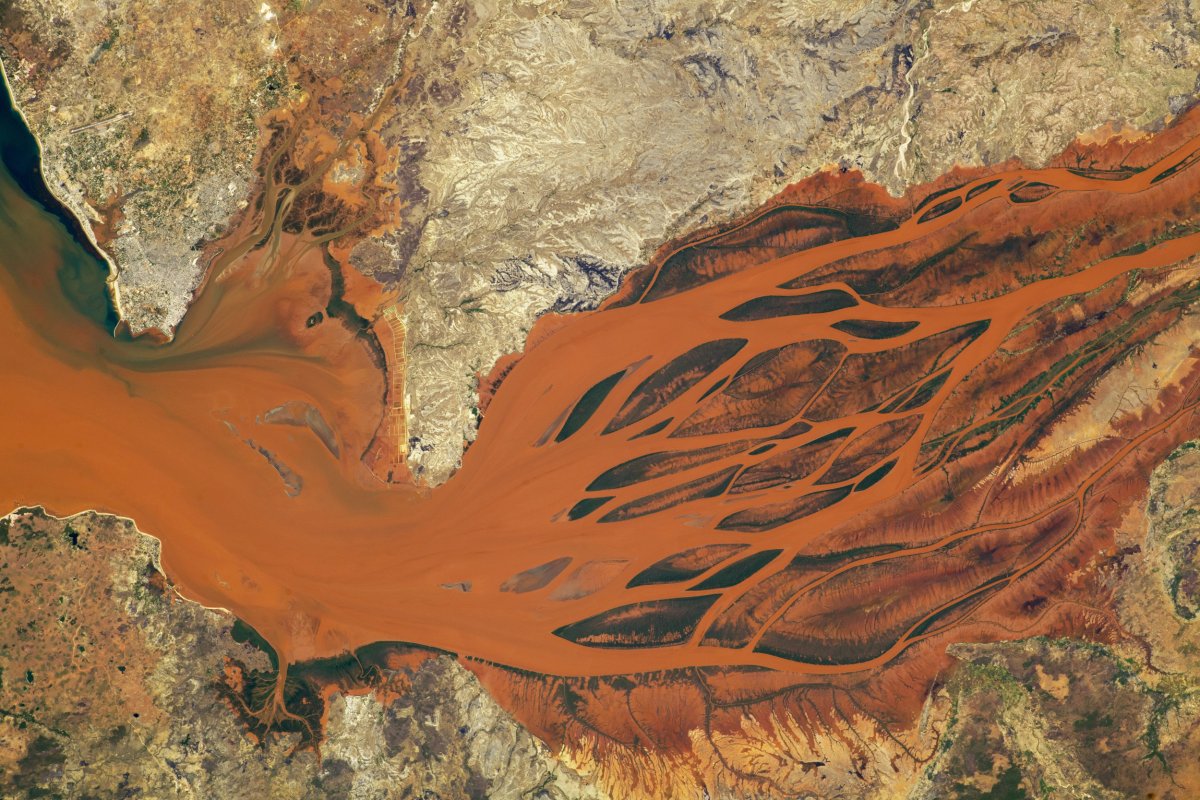Astronauts have captured a "bloody" phenomenon running through some of the Earth's lakes while on board the International Space Station.
They took photographs showing bodies of water flowing in red colors due to an abundance of algae and bacteria lurking in the water.
One photograph, posted to the NASA Earth Observatory, shows the Laguna Colorada, also known as the Red Lagoon in the Bolivian Andes, from above. This lagoon is famous for being bright red in appearance, and according to local folklore, the lake isn't full of water at all, bur rather the blood of gods.
The reddish hues are characteristic of hypersaline environments—where bodies of water are typically saltier than normal seawater. In these lakes, red algae and other microorganisms are so abundant that they color the water vibrantly.

Some lakes see more of this algae growth than others. Its growth depends on several factors, including water temperature, light and the saltiness of the water. The algae in the Laguna Colorado is a vital food source for flamingos, which come to the water to feed.
Another image captured by the astronauts shows the Betsiboka River Delta in Madagascar, revealing water flowing in red and brown colors.

The redness of this river, and other waters in Madagascar, is caused by the iron-rich sediment, the NASA Earth Observatory reported.
Many pictures have been captured of these bloody waterways before by satellites and astronauts. According to a previous report from the NASA Earth Observatory, one astronaut, upon meeting the president of Madagascar said: "Oh, yes, I know your country. It is the one bleeding into the ocean."
The sediment flows through the river and sometimes clogs waterways. However, it also occasionally forms new islands, where mangroves grow.
The Great Salt Lake in Utah has also seen a high amount of red algae blooming in its waters in the past.
A satilite image below shows the lake from above, where half the water is colored with a reddish tint.

While the bloody color may look strange, some algae provides vital water sources for bird species and marine life.
In the Betsiboka River Delta, the seagrasses in the estuary provide food to endangered green turtles and sea cows.
An excessive amount of algae in water can be harmful. Red tide, for example, is a type of algal bloom that grows quickly and can color waters bright red. High concentrations of this algae can be toxic to marine life. Warmer waters, affected by climate change, can cause high amounts of red tide in lakes and rivers.
Do you have a tip on a science story that Newsweek should be covering? Do you have a question about algae? Let us know via science@newsweek.com.
Update 10/30/23, 12:14 a.m. ET: a satellite image showing Great Salt Lake has been added to this article.
About the writer
Robyn White is a Newsweek Nature Reporter based in London, UK. Her focus is reporting on wildlife, science and the ... Read more
To read how Newsweek uses AI as a newsroom tool, Click here.



